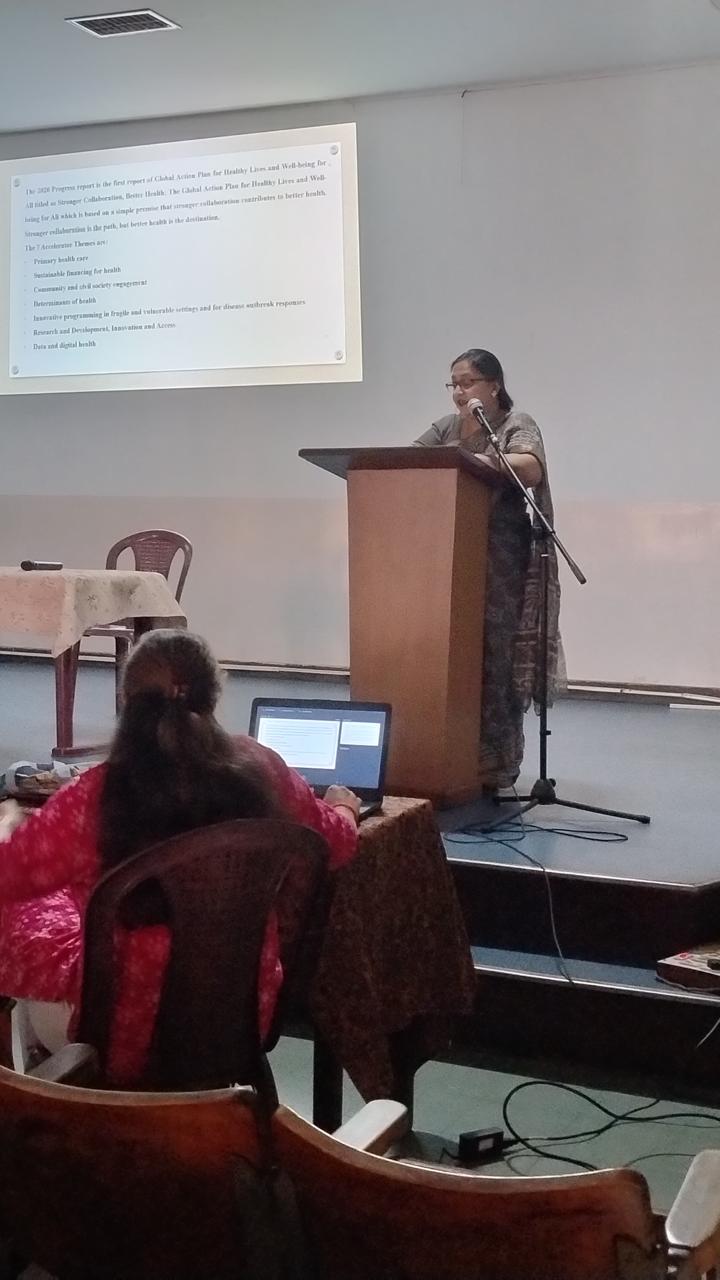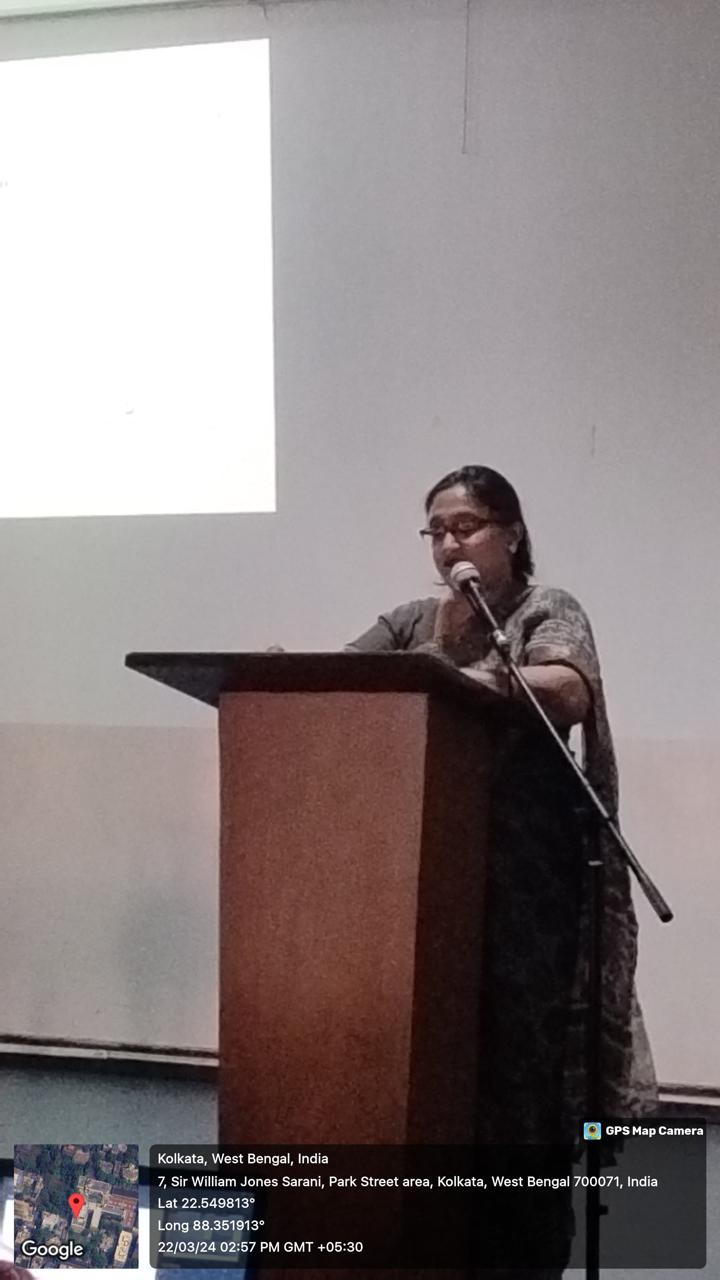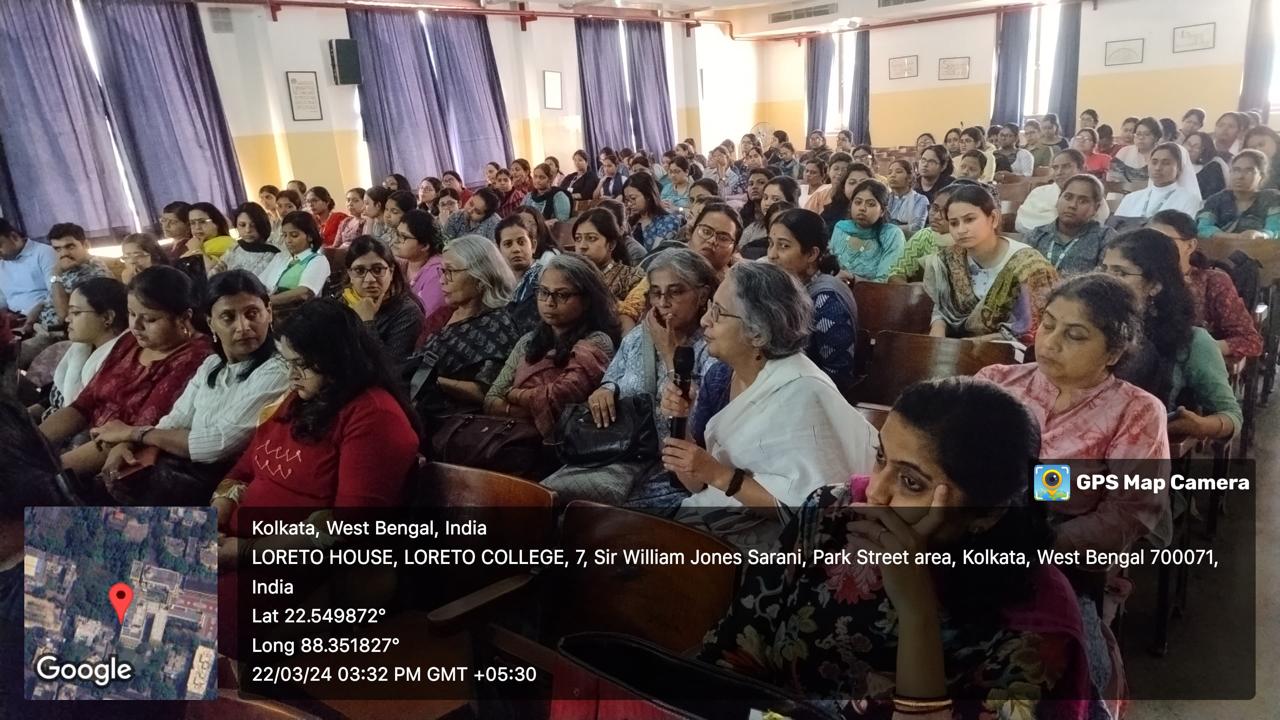Research Cell Presentation by Dr. Kaustuva Banerjee
Dr. Kaustuva Banerjee, Assistant Professor, Department of Geography and Head of the Department of B.Ed., presented a paper titled “School Health Status in West Bengal” at a session organised by the Research Cell of Loreto College, Kolkata on March 22, 2024. She commenced her presentation by highlighting that the 2020 Progress Report is the first report of the Global Action Plan for Healthy Lives and Well-being for All, titled “Stronger Collaboration, Better Health.” This Global Action Plan is based on the premise that stronger collaboration contributes to better health. Dr. Banerjee underscored the interdependence of health and education as important attributes of demography that mutually influence each other. Dr. Banerjee further elaborated that according to UNESCO reports, there are 1.2 billion adolescents aged between 10–19 years worldwide, who constitute approximately 16% of the global population. More than half of all adolescents reside in Asia. India, according to UNICEF, has the world’s largest adolescent population, with every fifth individual aged between 10–19 years.
Dr. Banerjee’s study examined the current physical, mental, and social health conditions of adolescent school students, as well as the physical and psycho-social environments of schools in four districts of West Bengal: North 24 Parganas, South 24 Parganas, Howrah, and Hooghly. The study aimed to analyse the health risks faced by adolescent students, assess the physical and psycho-social environments of schools, compare differences in health status among Government, Government-sponsored, and Private schools in rural and urban locations, and identify barriers to implementing School Health Programmes. Both quantitative and qualitative analyses were conducted, revealing disparities in health issues among adolescent boys and girls, as well as variations between urban and rural settings and different types of schools. The findings highlighted the need to address identified barriers to accessing health services and recommended steps to make adolescent health services more accessible across districts, school types, genders, and locations.




